TPO Roofing: Advantages and Considerations for Your Next Roof
Navigating the choices for flat or low-slope roofing? TPO roofing might just tick all your boxes. Known for its energy-efficient properties and resilient design, TPO roofing is both a practical and popular choice. We’ll skip the fluff and break down what you need to know, from benefits to installation nuances, helping you make an informed decision on whether TPO is right for your project.
Key Takeaways
TPO roofing is a durable, flexible, and energy-efficient material ideal for low-slope and flat roofs, with a typical system including three layers: a polymer base, polyester-reinforced fabric, and a compounded top ply.
The installation of TPO roofing requires meticulous surface preparation, proper attachment methods (mechanical fastening, adhesive bonding, or ballasting), and precise hot-air welding for seam integrity to prevent water infiltration.
Despite its advantages such as energy efficiency, durability, and environmental friendliness, TPO roofing faces challenges including inconsistency between manufacturers, installation sensitivity, and a comparatively shorter track record than other materials.
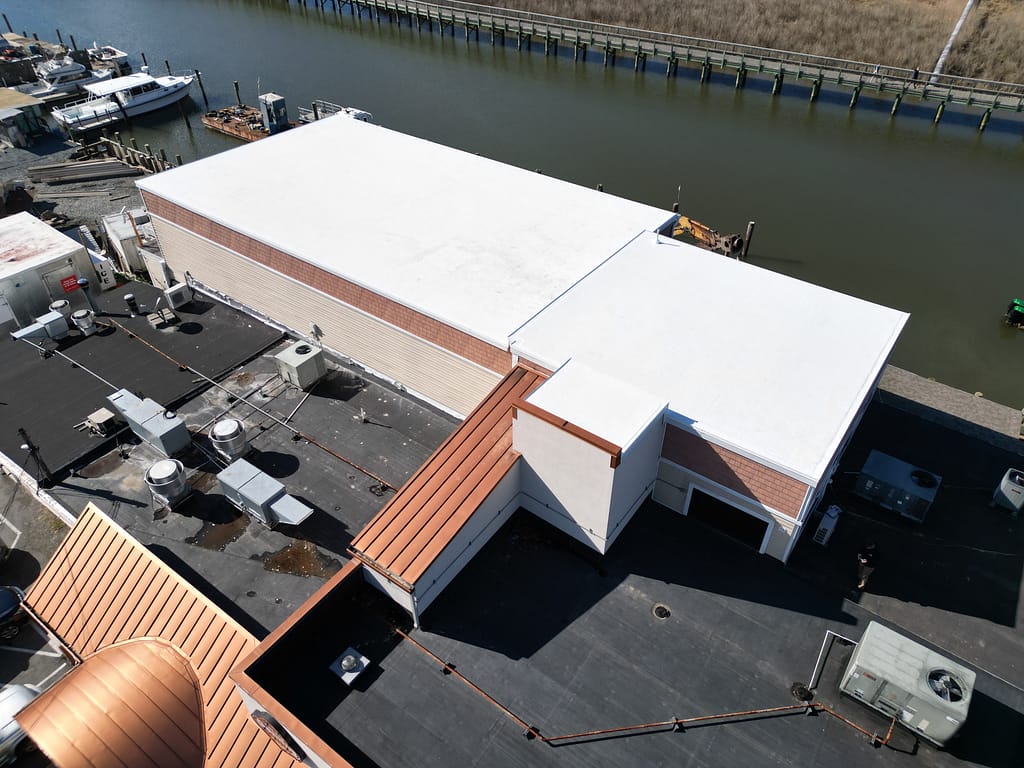
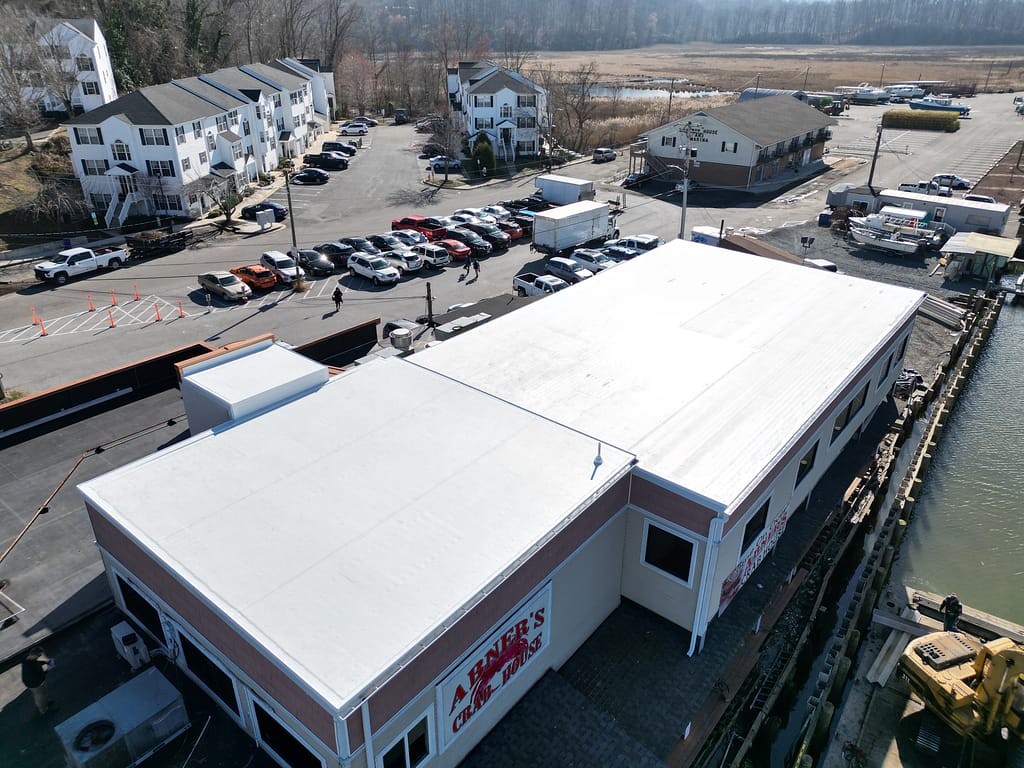
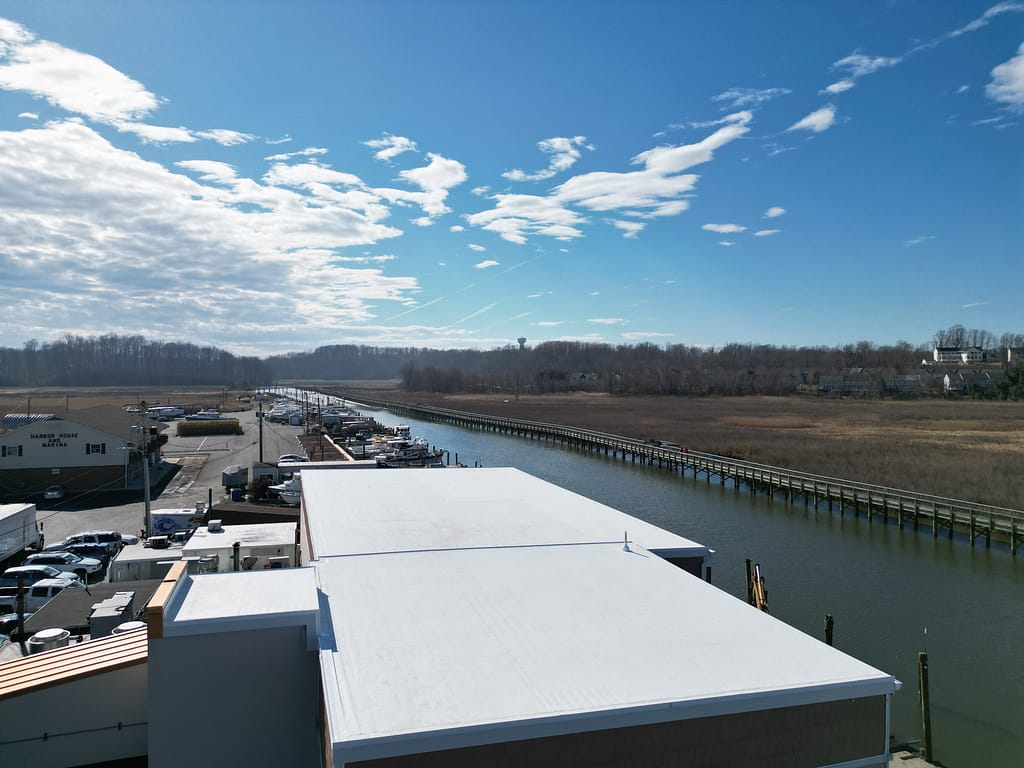
Understanding TPO Roofing
TPO, an abbreviation for Thermoplastic Polyolefin, is known for its heat-reflective and energy-efficient properties. It is a popular single-ply roofing material. This innovative roofing material offers protection for various structures while simultaneously contributing to energy savings. It’s an ideal solution for low-slope and flat roofs, thanks to its flexibility and resilience to wear and tear.
The Components of TPO Roofing
A typical TPO roofing system consists of three essential layers: a polymer base, a polyester-reinforced fabric, and a compounded top ply. The TPO membrane integrates a blend of polypropylene and ethylene-propylene rubber, creating a flexible, robust, and durable product. These commercial roofing systems are available in various thicknesses, with 60 mil being the most commonly utilized option.
Applications of TPO Roofing
TPO roofing, also known as TPO roofs, is ideally suited for low-slope or ‘flat’ roofs, making it a popular choice for commercial buildings like office complexes, hotels, warehouses, and schools. While less common for steep residential house roofs, TPO has found its place in apartments, condos, and flat-roofed extensions of residential homes.
TPO Roofing Installation Process
Installing a TPO roof is a three-step process: roof surface preparation, TPO membrane attachment, and seaming and welding of the edges. Each step requires careful execution and precision to ensure a successful TPO roofing installation.
Preparing the Roof Surface
The existing roof surface must be suitably prepared before installing the TPO membrane. This involves smoothing any sharp edges that could potentially damage the membrane and applying flashing around vents and other protrusions. These steps are crucial in securing the roof from water penetration and maintaining the TPO roofing system’s integrity.
Attaching the TPO Membrane
There are several methods to attach a TPO membrane roof. These include using mechanical fasteners, adhesive bonding, or a ballasting system. The choice of method depends on the specific project requirements.
In some cases, fleece-back TPO membranes are used to enhance durability, and these can be installed using adhesives or mechanically fastened.
Seaming and Welding
After attaching the TPO sheets, the next step involves seaming and welding. A hot-air welding technique is used to join the TPO roofing membranes, creating strong, water-tight seams. To maintain the integrity of the TPO membrane, welding should be performed at the lowest setting that still sufficiently melts the seam.
Advantages of TPO Roofing
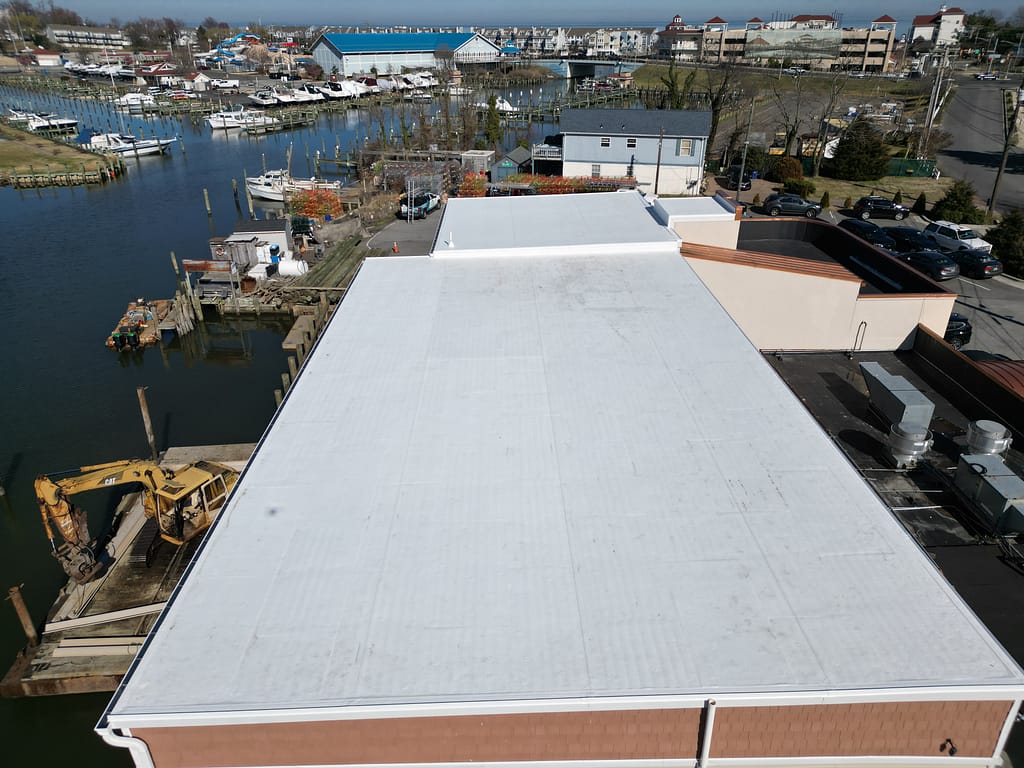
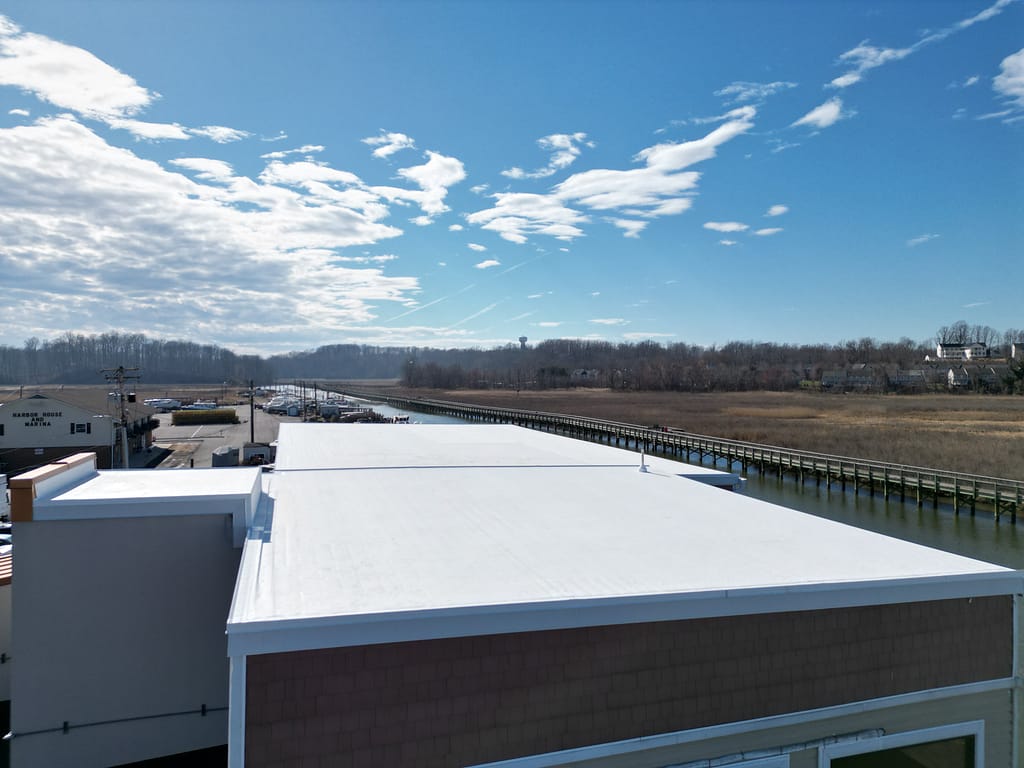
TPO roofing, with its multitude of benefits, is a popular choice for roofing materials. Its energy efficiency, durability, and environmental friendliness are but a few of the advantages that make TPO a worthy consideration for your next roofing project. When considering TPO roofing costs, it’s important to weigh these benefits against the investment.
Energy Efficiency
Energy efficiency is one of the standout features of TPO roofing. The white color of TPO roofing contributes to its ability to reflect UV rays, helping maintain cooler building interiors and reducing the need for air conditioning.
Moreover, the insulation beneath the TPO membrane further enhances the roof’s overall thermal efficiency.
Durability and Longevity
Renowned for its durability and longevity, TPO roofing systems are a reliable choice. Its features include:
Flexibility to accommodate a variety of roof shapes and movements
Withstands long-term exposure to UV light
Highly resistant to puncturing, tearing, and fire exposure
The availability of various thicknesses and the inclusion of a scrim reinforcement layer significantly contributes to the durability of the TPO roofing systems on a roof deck.
Environmental Friendliness
Beyond its functional advantages, TPO roofing is also an environmentally friendly option. It’s free of chlorine and fully recyclable, reducing its ecological footprint.
The environmental friendliness of TPO roofing is another feather in its cap, making it an appealing choice for those mindful of environmental impact.
Potential Drawbacks of TPO Roofing
Despite its many benefits, TPO roofing does have some drawbacks. Potential concerns include inconsistencies among manufacturers, installation challenges, and a limited track record.
Awareness of these potential issues can help in making an informed decision.
Inconsistency Among Manufacturers
Inconsistency among manufacturers is one of the potential drawbacks of TPO roofing. Variations in TPO formulations can lead to performance discrepancies and premature aging.
Additionally, transparency issues exist with some manufacturers who do not provide adequate information on membrane performance.
Installation Challenges
Potential installation challenges can be another downside of TPO roofing. Proper temperature control during welding is crucial to avoid seam failures and membrane degradation. Overheating and underheating during the welding process can result in membrane damage or weak bonds, leading to potential seam failure and water infiltration.
Limited Track Record
Compared to other commercial roofing materials, TPO roofing has a relatively shorter history. This limited track record has led to skepticism about its longevity and proven performance. However, with advancements in technology and continual improvements, TPO roofing continues to be a viable option.
Comparing TPO Roofing to Other Materials
A comparison of TPO roofing with other roofing materials like EPDM and PVC is beneficial when selecting a roofing material. Each material has its advantages and drawbacks, and understanding these differences can aid in making an informed decision.
TPO vs. EPDM
Comparing TPO and EPDM, both materials offer similar benefits, but there are a few key differences. Here’s a breakdown:
Cost: The cost of TPO and EPDM roofing materials and installation are approximately the same.
Lifespan: EPDM has a slightly longer lifespan than TPO.
Maintenance: TPO generally requires less maintenance than EPDM.
Resistance: TPO offers more resistance to mold, dirt, and punctures
TPO vs. PVC
In a comparison with PVC, TPO offers many of PVC’s advantages without the use of plasticizers and chlorine salts. PVC roofing membranes are known for their strength, flexibility, and inherent fire retardancy, and TPO incorporates many of these advantages into its design.
Choosing the Right Roofing Contractor
Selecting a suitable roofing contractor is a vital step in executing any roofing project. A well-qualified, experienced contractor can ensure a successful TPO roofing installation. Consider their experience with TPO roofing, check their licensing and insurance, and read customer reviews and testimonials.
Experience with TPO Roofing
Ensure the contractor’s experience with TPO roofing before hiring them. A contractor with a proven track record in TPO installations is more likely to offer quality workmanship. Consider their portfolio, ask about their experience with TPO roofing, and get multiple quotes to assess their proficiency with these materials.
Licensing and Insurance
The contractor’s licensing and insurance status is another significant consideration. Ensure the contractor is fully licensed, certified, and carries insurance. This is fundamental for professionalism and protection against potential liabilities. You can verify a roofing contractor’s license through state online databases and request a certificate of insurance from the contractor to ensure the policy is current and adequate. Additionally, you may check if the contractor is a member of the National Roofing Contractors Association, which can further attest to their professionalism.
Customer Reviews and Testimonials
Lastly, the importance of customer reviews and testimonials should not be underestimated. Look for contractors who have a significant number of reviews as this often indicates extensive experience and enhances credibility. Review sites like Angi, Houzz, and Porch provide platforms for homeowners to share their experiences with contractors.
Summary
In a nutshell, TPO roofing offers a compelling blend of versatility, cost-effectiveness, and energy efficiency. It’s an excellent option for low-slope and flat roofs, from commercial buildings to residential extensions. While there are potential drawbacks, proper installation and maintenance can mitigate these and ensure a long-lasting, functional roof. The choice of a knowledgeable, experienced contractor is crucial to a successful TPO roofing installation.
Frequently Asked Questions
TPO roofing is a thermoplastic polyolefin membrane used in commercial and residential roofing. It is a great choice for flat or low-slope roofs as it reflects heat instead of absorbing it.
The major disadvantage of TPO roofing is premature aging and seam failures caused by prolonged exposure to intense heat and UV radiation, particularly in states with high temperatures. Be cautious as these membrane failures are common in such conditions.
A TPO roof typically lasts anywhere between 10 to 30 years, making it a durable choice for flat roofs commonly found in commercial settings.
TPO is better than EPDM for warmer, sunnier climates because of its superior reflectivity and UV resistance, making it the best choice for many regions in the US.
TPO offers advantages over EPDM and PVC roofing, as it does not require specific chemicals, is more cost-effective, and requires less maintenance.

